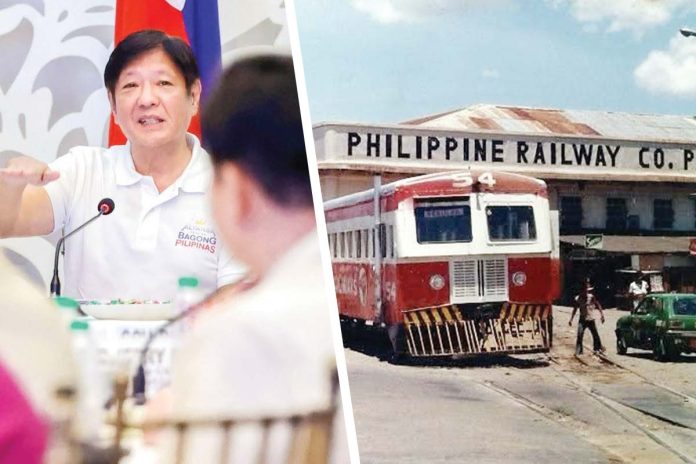
ILOILO City – The proposed revival of the Panay Island railway system remains in limbo despite the interest shown by several local and international investors.
The railway started operating in 1907. Operations ceased in 1983 due to mounting losses
State-owned Panay Railways, Inc. (PRI) has not received any formal feasibility studies or proposals from the 13 investors that expressed interest in the project.
The planned railway revival gained prominence following its mention by President Ferdinand “Bongbong” Marcos Jr. during his first State of the Nation Address (SONA) in 2022. It was later included in the list of the government’s 10 flagship infrastructure projects under the National Economic and Development Authority (NEDA).
Recently, the status of the project was again raised during a meeting with President Marcos as part of the Regional Development Council (RDC) discussions.
However, according to PRI chief operations officer Cesar Capellan, not a single proposal has been submitted despite the attention generated.
“From any of the 13 interested proponents, not one has submitted their proposal,” Capellan said in an interview with Panay News.
Companies from Turkey, the United States of America, Saudi Arabia, Japan, the United Kingdom, and China initially signed a Memorandum of Understanding (MOU) with PRI expressing interest.
More recently, the government of Brunei also indicated interest in the project, proposing to link the railway to Borneo. However, Capellan emphasized that no official feasibility studies have been provided by any of these parties.
The PRI largely attributed this to the significant financial and logistical complexities involved in reviving the railway system.
A notable development occurred on September 19, 2024, when an investor from Germany, Siemens Transportation Group Inc., visited PRI’s office in Iloilo. The company proposed an alternative to the traditional train system: a “magnetic train” powered by hydrogen fuel derived from waste-to-energy processes.
The German firm is also exploring potential partnerships with local governments, including Passi City, to develop waste-to-energy solutions at the Sanitary Landfill in Barangay Aglalana.
On September 21, 2024, the company met with Iloilo City’s Mayor Jerry Treñas to explore the possibility of using the Calajunan dumpsite in Mandurriao district for the same purpose. However, the mayor clarified that the site is already committed to Metro Pacific Water’s (MPW) plans.
Despite this visit, Siemens has not yet confirmed whether it will proceed with the railway revival proposal.
Capellan remains hopeful that progress can still be made before the end of President Marcos’ term.
“We are still hopeful that this project will push through,” he said.
PRI continues to welcome all investor proposals. Once a feasibility study is submitted, it will be reviewed by NEDA. If approved, the project will undergo a Swiss challenge, a public procurement process where third parties are invited to match or improve the proposal.
The project is expected to follow a public-private partnership (PPP) model, with a build-operate-transfer (BOT) scheme. Under this model, the investor would operate the railway for 25 to 50 years.
The estimated cost for Phase 1 of the project, which covers the 117 kilometers of railway track between Iloilo City and Roxas City, Capiz, is approximately US$1.5 billion.
The Panay railway revival is seen as a crucial infrastructure project to boost regional connectivity and economic growth.
The railway’s original route was 117 kilometers long and included 19 permanent and 10 flag stations. It connected the then towns of La Paz and Jaro (now districts of Iloilo City), Pavia, Santa Barbara, New Lucena, Pototan, Dingle, Dueñas, and Passi in Iloilo, and Dumarao, Dao, Panitan, Cuartero, and Loctugan in Capiz. It reached Roxas City.
In Iloilo City, the trains ended at the passenger terminal along the wharf next to the Customs House and near where the current Iloilo City Hall stands. Trains ran across what is now the Drilon Bridge from La Paz and down the bank of the Iloilo River to Muelle Loney at the Port of Iloilo.
In 1980s, a 12-kilometer spur was constructed from Dueñas to Calinog, Iloilo to serve a sugar refinery in Iloilo./PN



